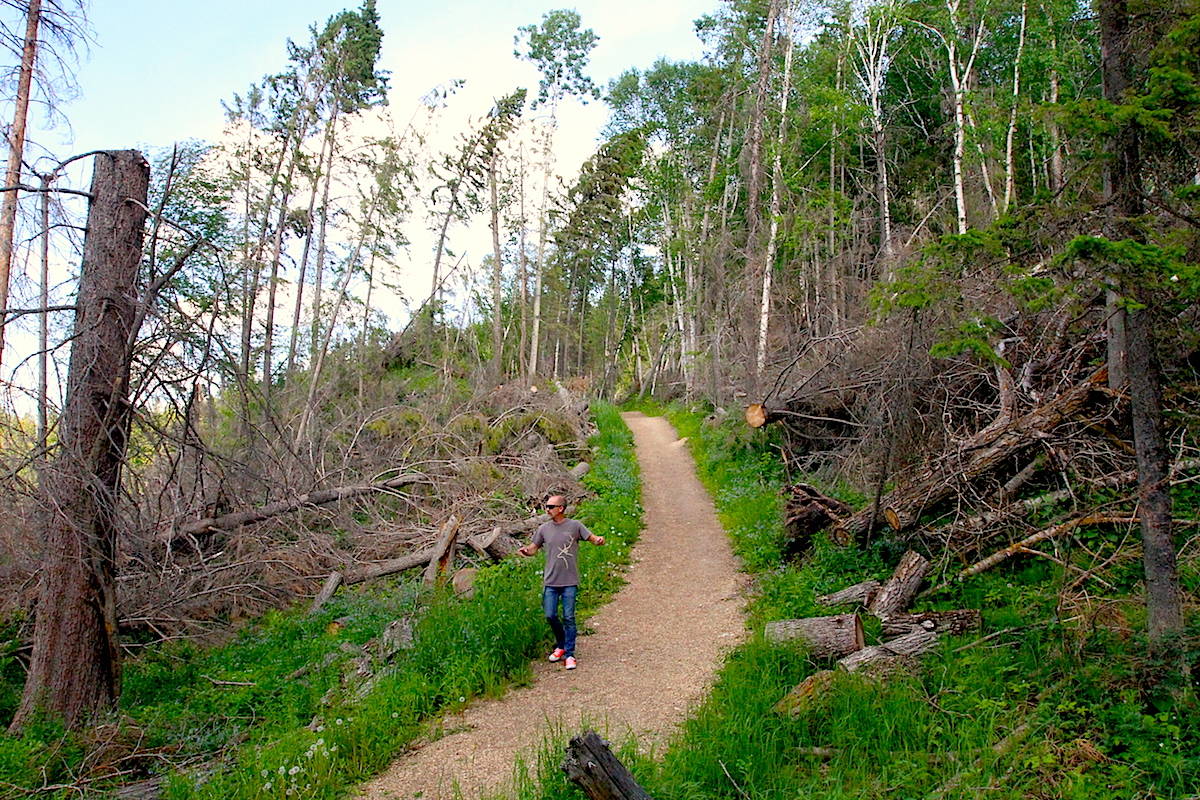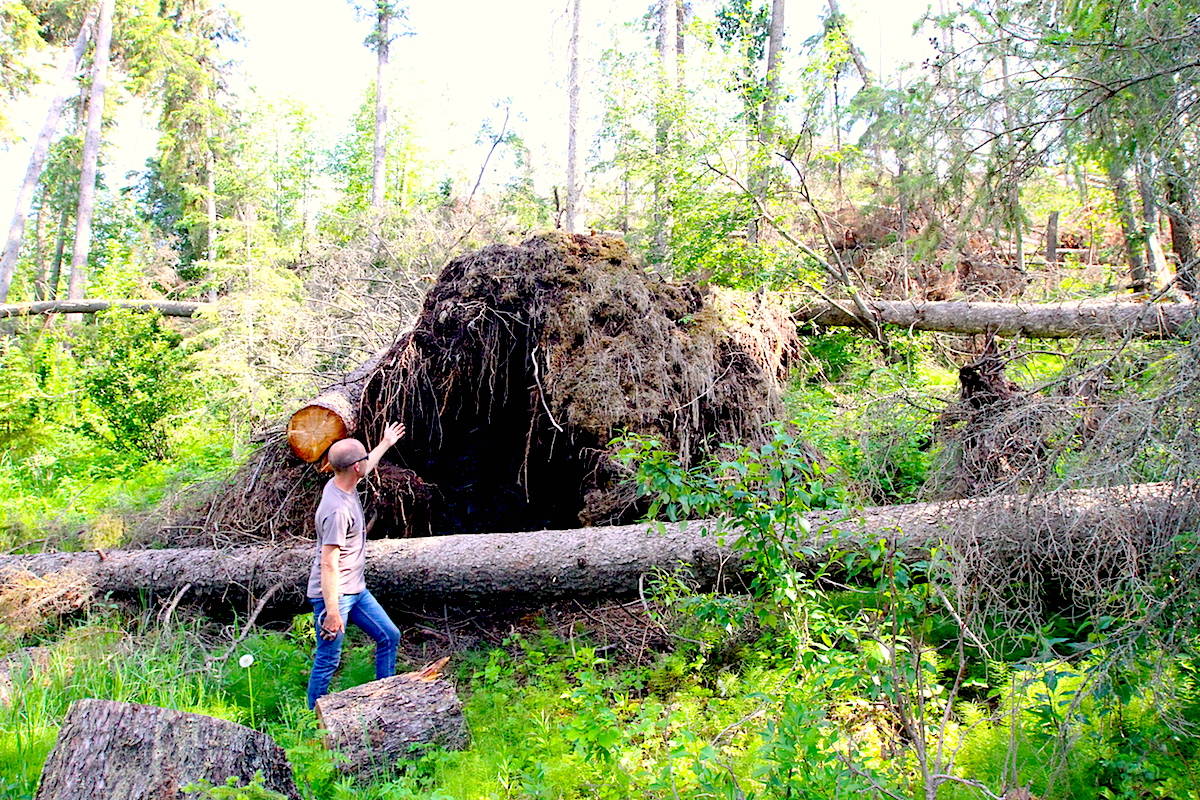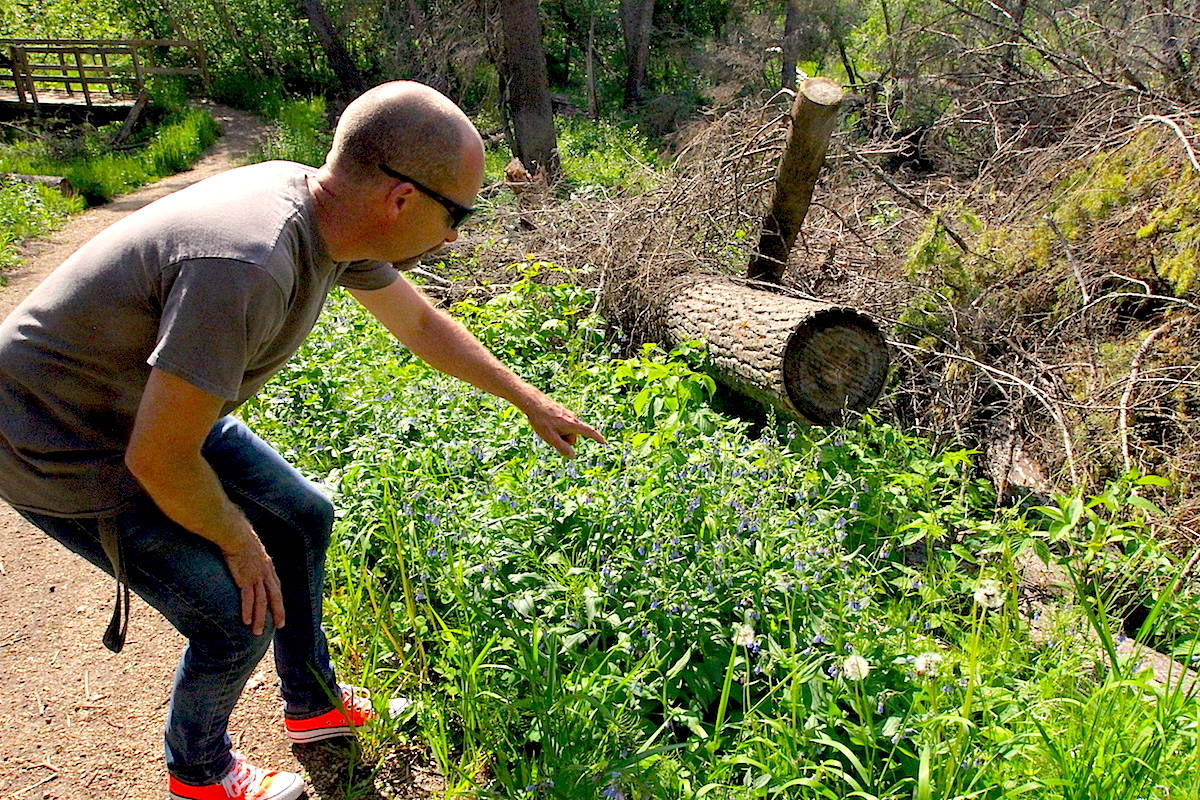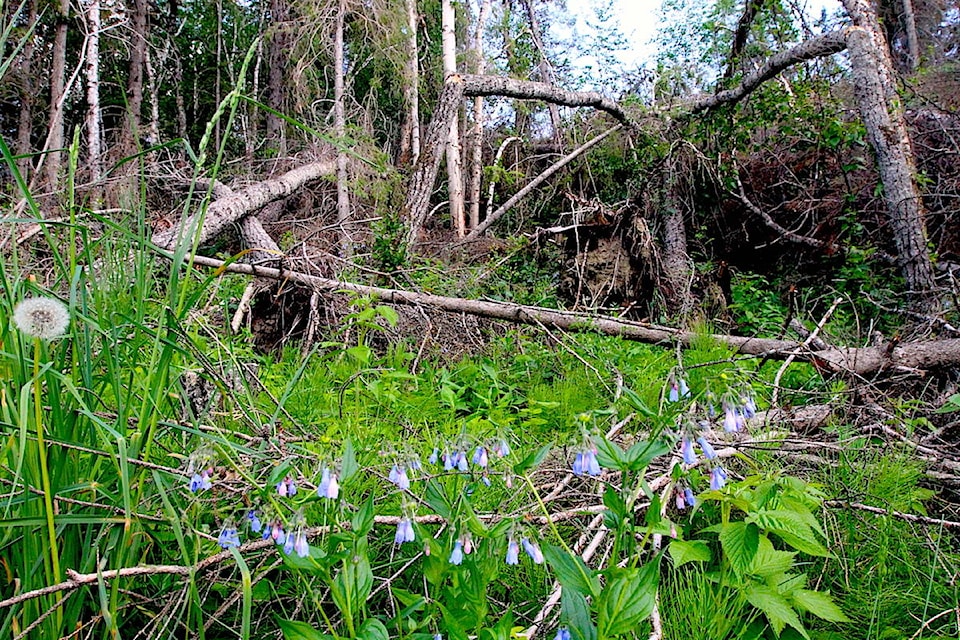From “bomb site” to lush green meadow — all in a single year.
That’s the remarkable power of nature, which is busy regenerating a forest that was flattened by last spring’s plow winds, said Todd Nivens, the executive director of the Waskasoo Environmental Education Society.
While in the Gaetz Lakes Sanctuary this week, Nivens pointed out some of the positives that came out of the 2017 freak weather event — including new wildflower blooms and sprouting shrubs.
“What we see here is true reforestation, as part of a natural, evolutionary process…” he said.
Last June the south end of the Gaetz Lakes Sanctuary took the brunt force of the straight winds that brought down thousands of Central Alberta trees.
The morning after the storm, Nivens came up over a rise in the trail and was jolted by a devastating panorama: About 300 trees were either lying stacked on the ground, or were slumped and knotted together up the hillside, looking like off-kilter participants in a game of Twister.
“I just thought, oh my god,” he recalled. “It looked like a bomb had gone off.”
Observing so much near century-old blow-down was “almost beyond words,” Nivens added. “It looked like the hand of a giant had wiped the landscape clean.”
But it didn’t take Nivens and his staff at the Kerry Wood Nature Centre long to realize that the way had actually been cleared for something special to happen.
“It’s not every day that you get to see a forest regenerate itself,” said Nivens, who stopped to admire the new raspberry, dogwood and wild rose bushes that have grown up around the fallen trees.
Without large spruce canopies keeping the sun and rain off the forest floor, he explained, a plethora of seeds, dropped by birds and wildlife, have been able to germinate.
The result is a colourful array of white anemones, purple lungwort, as well as snowberry and Saskatoon berry bushes and other plants.
This meadow mixture makes for wider habitat and food sources for woodpeckers, deer and other wildlife. Predators, such as owls, will also find prey easier, said Nivens.
All the dead wood lying around becomes a large pollinator garden for bees and other insects.
As well, there’s new interesting for hikers: For the first time in half-a-century, a person can stand on the trail and observe both Gaetz Lakes at once. Nivens noted they were previously obscured by trees.
Eventually, this meadow will be taken over by a weedy growths of aspen, balsam and poplar.
Then these smaller trees will be “out-competed” by hardy, tall spruce trees, which will once again begin blocking out the light on the forest floor, eliminating the diversity that’s now beginning to grow.
Nivens said another windstorm or forest fire will eventually renew the cycle again.
In the meantime, he believes some of the young students he’s taken around the trails this spring will be old enough to see a mature spruce forest here again in 70 years time.
lmichelin@reddeeradvocate.com
Like us on Facebook and follow us on Twitter



